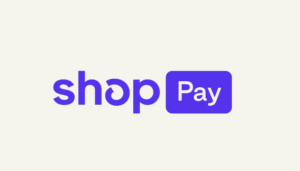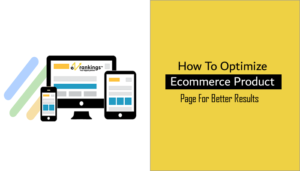Quick Commerce vs. Traditional E-Commerce – A Core Differences

Quick Commerce and traditional E-Commerce are two different types of online shopping. Whereas delivery in traditional E-Commerce is usually conducted within a couple of days, Q-Commerce promises ultra-fast delivery, frequently in 10 to 30 minutes, of basic goods, such as groceries or everyday-use products.
This analogy has gained more speed in the modern rapid digitalized world where customers demand speed, ease, and on-demand service. Companies are quickly revamping their models to suit these changing needs, without compromising on efficiency, as well as customer satisfaction.
Understanding the core differences between Q-Commerce and Traditional E-Commerce is crucial for brands. It will help them stay competitive, optimize logistics, and deliver superior customer experiences in an evolving marketplace driven by immediacy and personalization.
What is Quick Commerce (Q-Commerce)?
Quick Commerce is the latest retail format where goods, most frequently daily essentials, such as groceries, snacks, or personal care items, are delivered within minutes after the order. In contrast to conventional e-commerce, Q-Commerce is based on a hyperlocal strategy and uses local warehouses, so-called dark stores, to quickly gather the ordering goods.
It is mostly mobile first, which enables customers to order easily using apps featuring real-time tracking and one-click payments. Q-Commerce, created with the speed and convenience in mind, serves the needs of customers living in cities where time is of the essence, changing their expectations and focusing on the ultrasonic speed of delivery and on-demand availability.
Top Quick Commerce Platform
Quick commerce is changing how customers purchase daily essential goods. Instacart, DoorDash, Deliveroo, Blinkit, and Zepto are the major players in the industry that are transforming the concept of convenience through their atypical models and hyperlocal processes.
All of them have some exclusive features depending on particular markets and demands of customers. Lets take a closer look at these leading Q-Commerce platforms to get an idea of what makes them special in this crowded market.
Instacart
Instacart is the top quick commerce service in North America for ordering groceries from nearby stores. The app makes it possible for users to work with personal shoppers who pick out and deliver items the same day and sometimes within an hour. Because Instacart partners with stores like Costco, Safeway, and Kroger, customers can find most of what they need on the platform. The ability to see your order’s status, set your own delivery days, and opt for subscriptions makes this service useful to busy people who want fast delivery of groceries.
DoorDash
Originally, DoorDash delivered meals, but these days it also offers quick commerce driven by DashMart to give people rapid access to food, drinks, and essentials. DoorDash supports cities in the U.S. and Canada, using a broad logistics system and mobile solutions to deliver in minutes. Thanks to its simple app, immediate tracking, and wide network, DoorDash becomes the top choice for those who enjoy meals or anything delivered quickly from local stores or eateries.
Deliveroo
Based in the UK, Deliveroo offers people access to quick meal and grocery delivery. In cooperation with grocery stores and local shops, Deliveroo offers Deliveroo Hop for those who want their orders in less than 10 minutes. The use of dark stores close to each customer helps it achieve very fast logistics. Due to its major role in Europe, Deliveroo mixes food delivery and quick commerce to bring speed, choices, and convenience to users who live in cities.
Blinkit
Blinkit, which used to be called Grofers, is a leading Q-Commerce platform in India for very fast grocery, snack, personal care, and household accessory deliveries. Blinkit mainly works in metro cities, operating with dark stores to ensure that orders are fulfilled swiftly. Its easy-to-use app, real-time location of drivers, and rising range of products are why urban Indian customers prefer it. Thanks to Zomato, Blinkit is able to continue expanding in India’s speedy online grocery sector.
Zepto
Zepto is an Indian Q-Commerce company that has become famous for delivering orders within 10 minutes. Urban Indians rely on Zepto to get groceries, daily essentials, and ready meals from dark stores in prominent cities. Young shoppers enjoy Zepto because it has a simple mobile interface, lets them monitor their orders in real time, and has a smooth last-mile delivery service. It stands out among other players by ensuring prompt deliveries, efficiency, and dependability.
What is Traditional E-Commerce?
Traditional E-Commerce works the same as regular website shopping, where you buy items and have them delivered within a few days. The focus of this model is on offering many products, which typically come from large warehouses or sellers apart from the main company.
They provide quick delivery, manage bulk products, and offer services to areas all over the world. Many traditional E-Commerce sites such as Amazon and eBay include large selections of electronics, clothing, and home products in their catalogs.
Even though its deliveries take longer than quick-commerce, traditional E-Commerce stands out for having many product varieties, high scalability, and proven delivery methods for handling major orders.
Top Traditional e-Commerce Platform
Traditional e-commerce websites have made it much easier for us to shop by supplying convenience, a wide range of choices, and competitive prices. Amazon, Flipkart, Myntra, eBay, AliExpress, and Snapdeal lead the sector, offering different advantages in their goods, shipping, and assistance to customers. For years, these companies have improved and grown, serving millions of buyers all over the world. Here, we will take a close look at each of the top e-commerce platforms and see what gives them an edge in the world of online business.
Amazon
With its wide assortment of goods and dependable shipping, Amazon leads as the top e-commerce company around the world. Apart from electronics and clothes, it has sections for groceries and digital services. Alexa and AI-based technology, as well as strong warehouse logistics, make shopping on Amazon easy. Being a Prime member means you can take advantage of speedier delivery and deals that only Prime users can get. Because it operates online in every country and never stops developing, Amazon is the main standard in the world of traditional e-commerce.
Flipkart
Flipkart is among the most popular e-commerce websites in India, where one can buy anything, starting with electronics, fashion, home, and so on. Walmart acquired it and has developed a good reputation of customer service, low prices, and big product selection. Flipkart has established itself as a company that hosts significant sale periods, such as the Big Billion Days, during which it records participation of millions of customers each year. With its widespread logistics and simple returns policies, as well as convenient app, it is the online store of choice in both urban and rural India.
Myntra
As India’s leading fashion and lifestyle online store, Myntra gives customers a choice of clothing, accessories, beauty goods, and footwear for all people. Because of its stylish collection and special brand deals, Myntra is popular with trendsetters, thanks to its regular offers available just through the app. Thanks to its straightforward interface, detailed size charts, and convenient return rules, shopping on the website is much easier. Myntra has become known for using technology and the latest trends to help customers shop for clothes and accessories online.
eBay
An auction-style approach on eBay is what makes people know it as a popular global marketplace for both used and new goods. On eBay, individuals or companies sell products under many groups, such as electronics, collectibles, fashion, and home goods. Buyers across the world can take advantage of the site’s flexible buying ways, safeguards, and broad reach for finding uncommon items or used purchases. E-commerce market shifts have not stopped eBay from being different and important.
AliExpress
AliExpress is an international online retail marketplace and a subsidiary of Alibaba Group that enables Chinese vendors to sell to international buyers. It has a reputation of low prices and huge product diversity; it sells electronics, fashion, accessories, home goods, etc. Despite potentially longer shipping times, AliExpress attracts budget-conscious buyers who are interested in getting bargains. Its convenient application, buyer protection and access to wholesale pricing has made it popular with small resellers and individual consumers across the world, especially in the emerging markets.
Snapdeal
Snapdeal is known for value shopping and focuses on supplying consumers in smaller areas who pay attention to costs. Consider buying clothing, electronic gadgets, home goods, and accessories, as prices are reasonable. Compared to some high-end stores, Snapdeal puts an emphasis on affordable prices and numerous beneficial products. Many people choose Snapdeal to shop online because it’s user-friendly and usually has discounts available everywhere in India.
Key Differences between Quick Commerce and Traditional E-commerce
Quick Commerce and Traditional E-Commerce target different groups of consumers and employ very different business models. Quick Commerce prioritizes very swift delivery, a small range of items, and fulfillment close to the buyer, while Traditional E-Commerce offers a wider choice of products, planned orders, and logistics managed from one location.
The factors that set them apart are how quickly products are sent, the order of stocking, the average size of orders, and how big a company can grow. Technology has a different impact in every model, offering real-time information in Q-Commerce and better search tools in standard ones. Having a clear understanding of these major differences matters for companies trying to stay relevant to customers and make profits.
| Aspect | Quick Commerce (Q-commerce) | E-commerce |
| Delivery Speed | Ultra-fast: 10–30 minutes, rarely over 2 hours. Instant gratification. | Standard: 1–7 days. Expedited (1–3 days) or same-day in select cities. |
| Product Range | Limited: 1,000–5,000 SKUs. Essentials, groceries, medicines, fast-moving goods. | Vast: Millions of SKUs. Electronics, fashion, home appliances, books, niche products. |
| Order Size | Small, frequent: Immediate/urgent needs (milk, snacks, medicines). | Large, planned: Electronics, furniture, bulk items. |
| Inventory Model | Dark stores/hyperlocal fulfillment centers near customers. | Large centralized warehouses, global supplier networks. |
| Business Model | Hyperlocal: Focus on dense urban areas, last-mile delivery (bikes/scooters). | Nationwide/global: Scalable operations, extensive logistics. |
| Technology Use | AI-powered instant tracking, route optimization, real-time inventory. | Advanced search/recommendation engines, multi-warehouse logistics, and marketplace platforms. |
| Customer Expectation | ⏱️ Speed, convenience, instant availability for urgent needs. | Variety, affordability, detailed info, flexible delivery. |
| Profitability Challenges | High operational cost per order, frequent orders, customer loyalty needed. | Economies of scale, lower cost per delivery, higher order values. |
Pros and Cons of Each Model
Quick Commerce:
Pros:
- Ultra-fast delivery: In Quick Commerce, the delivery takes place in 10-30 minutes. This makes it convenient in last minute requirements such as groceries, medicines and daily requirements.
- Great convenience: This convenience is very high and meets the urban lifestyle. It works best in a place where time is priority and having a product readily available is important.
- Impulse buying: QCommerce is ideal to fulfill small purchases since there are no high order thresholds and fast delivery.
Cons:
- Expensive operations: Fast delivery implies the last mile of transportation, which may be served by scooters or bikes, making each order more expensive.
- Small SKU quantity: SKUs are 1,000 to 5,000 products since it is a fast-moving product.
- Scalability problems: Is most effective in high-population cities and expansions are more difficult in low-population areas.
Traditional E-Commerce:
Pros:
- Scalable model: This model expands across cities, regions, and countries. It’s possible because of centralized warehousing and broad logistics networks.
- Wide product selection: Traditional eCommerce has millions of SKUs, including electronics, fashion, books, and home appliances.
- Cost efficiency: Economies of scale of eCommerce help reduce logistics costs, especially for bulk or high-value orders.
Cons:
- Slower delivery: Standard delivery timelines range from 1 to 7 days, which may not meet urgent needs.
- Lower real-time visibility: Inventory updates and delivery tracking are often less immediate than in Q-Commerce.
- Less suited for urgent or impulse purchases: Focused on planned shopping rather than spontaneous buying behavior.
Quick Commerce vs. Ecommerce: Which Models Win in 2025
While both Q-Commerce and Traditional E-Commerce grow in 2025, each attracts specific groups of consumers. Q-Commerce is thriving in big cities thanks to people craving faster, more convenient, and quick delivery.
With such fast service, it satisfies shoppers who want to buy things quickly and without much planning. Zepto, Blinkit, and traditional businesses looking into quick delivery are helping to make their market stronger. However, the high expense of operating and the limits it faces in terms of scaling hold it back from winning elsewhere besides cities.
Still, traditional E-Commerce remains popular because it offers a vast selection of products, is cost-effective, and operates on a national or worldwide level. Many people prefer Amazon and Flipkart because they have well-organized systems, a wide variety of products, and low prices, especially when planning to order something expensive.
In the end, the outcome in 2025 will be determined by what customers require. Even though Q-Commerce provides fast services, traditional E-Commerce is still the leader in offering a wide range of products and expansion. A combination of approaches may turn out to be the best approach.
How EZ Rankings can help you to develop quick commerce and traditional e-commerce platforms?
With the help of EZ Rankings, best website Development Company, you can create and enhance both Quick Commerce and Traditional E-Commerce platforms using a wide range of digital services. To help with Quick Commerce, we offer mobile-focused UI/UX, local SEO, live updates for inventory, and custom apps to assist rapid delivery and an excellent customer experience. For Traditional E-Commerce, EZ Rankings handles the website development, organizes the product catalog, advanced SEO, and marketing strategies to grow sales.
Because we are experts in digital transformation, analytics, and user behavior, your platform provides users with what they need: from speed and convenience to diversity and size. When businesses use EZ Rankings’ tailored strategies for their chosen models, they can launch, grow their business and compete in the digital retail world.
Conclusion
These two types of E-Commerce are suited to different ways of running a business and meeting various consumers’ needs. Quickness, ease, and meeting urgent, daily needs are Q-Commerce’s strengths, while Traditional E-Commerce is good at having plenty of options, being affordable, and growing. You should pick the right model based on your product, the customers you want to attract, and your long-term plans.
Some people who are shopping shortly before needing a product may benefit from Q-Commerce, whereas those shopping for general needs tend to use regular sites. Before adopting the model or hybrid version, businesses should examine their potential and what clients seek to ensure an appropriate approach for today’s highly changeable digital world.






